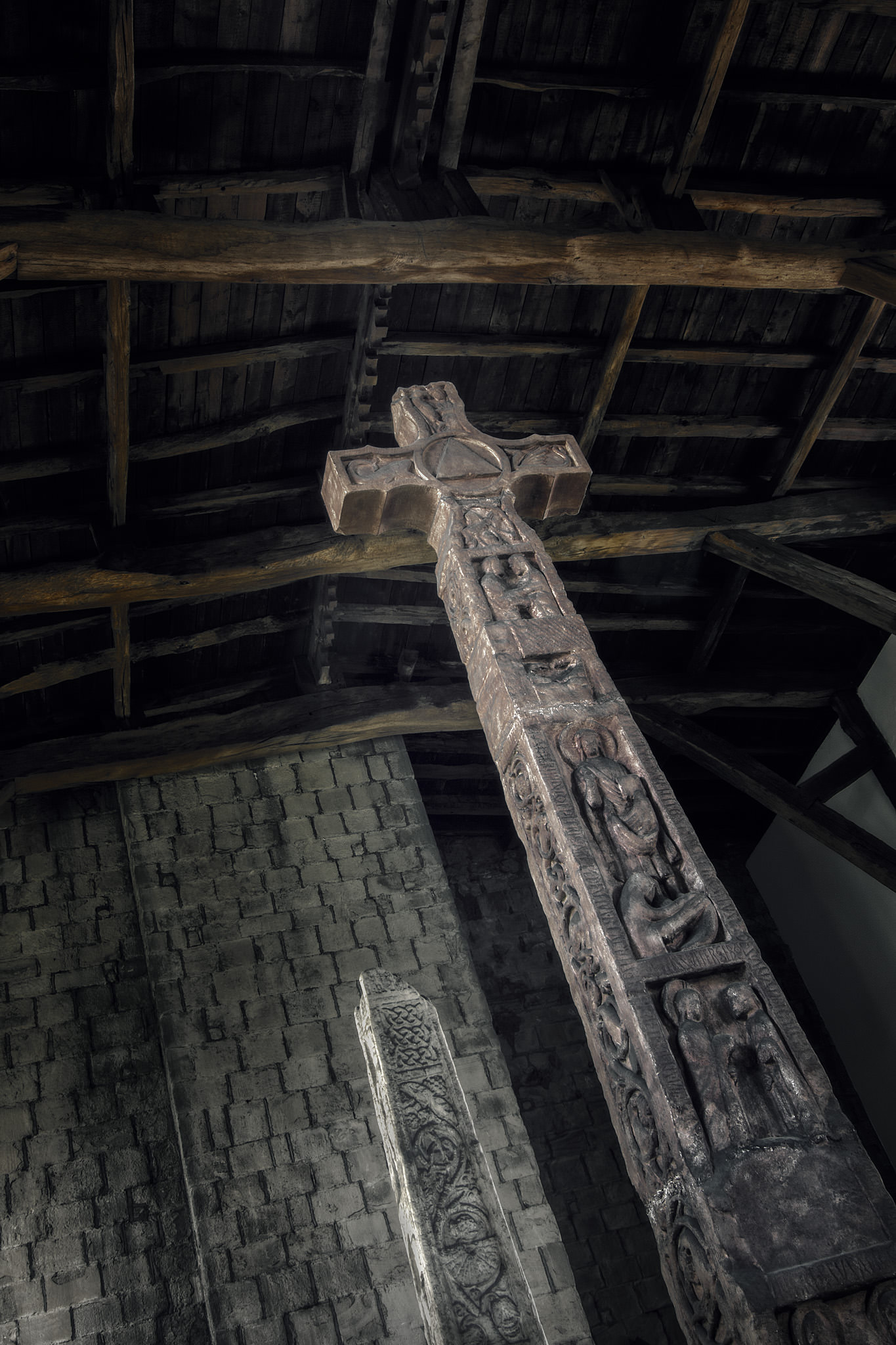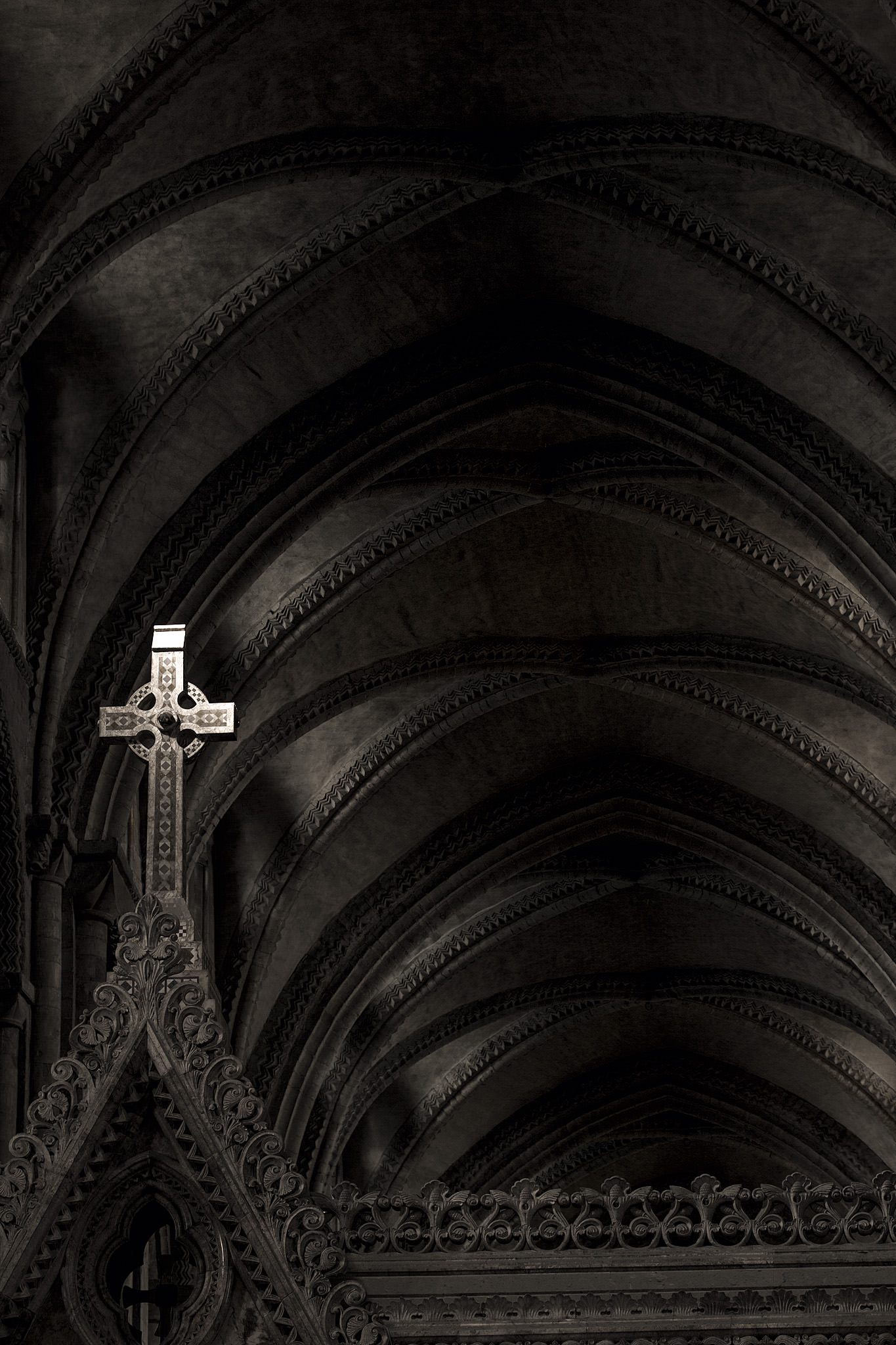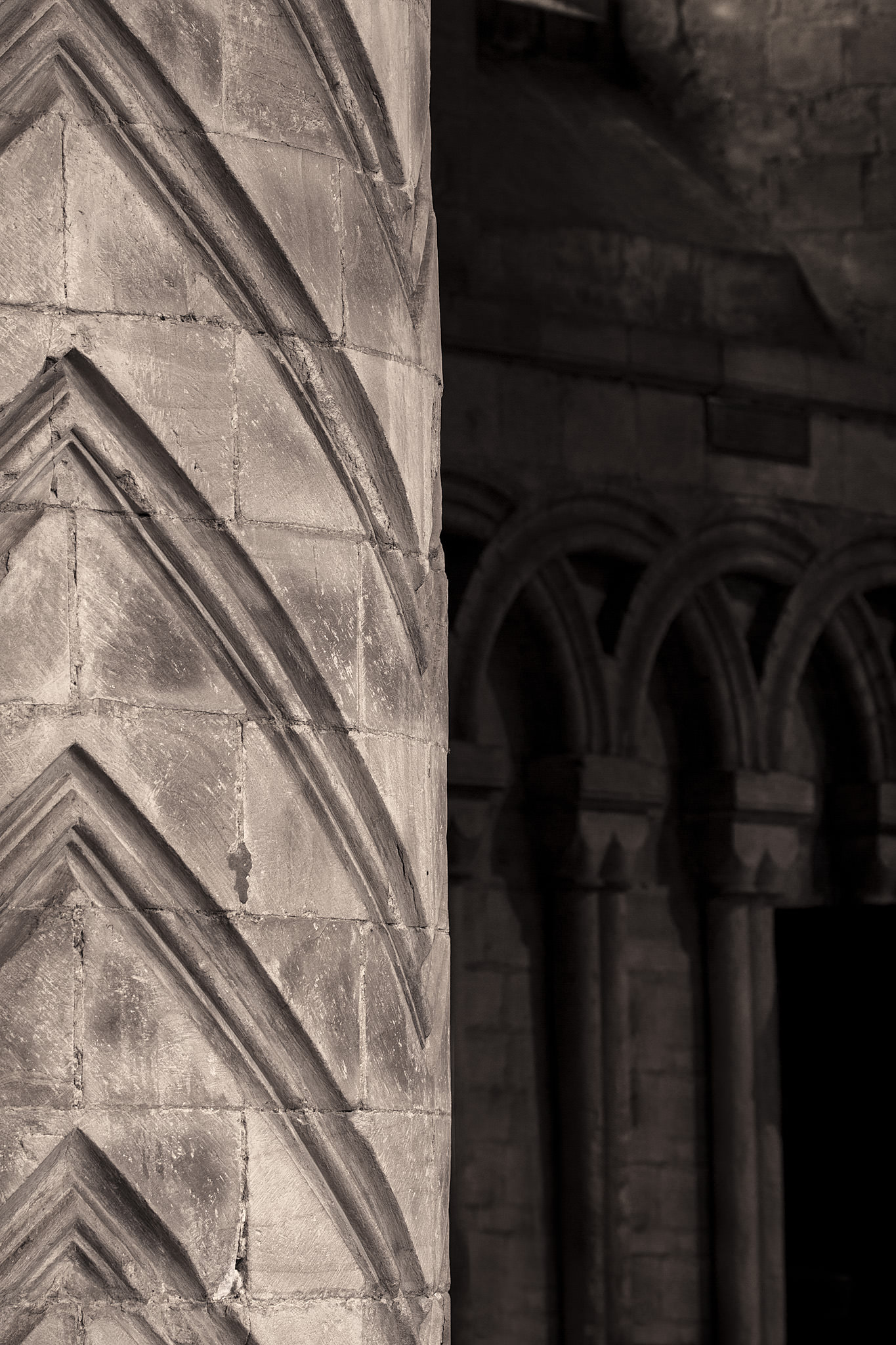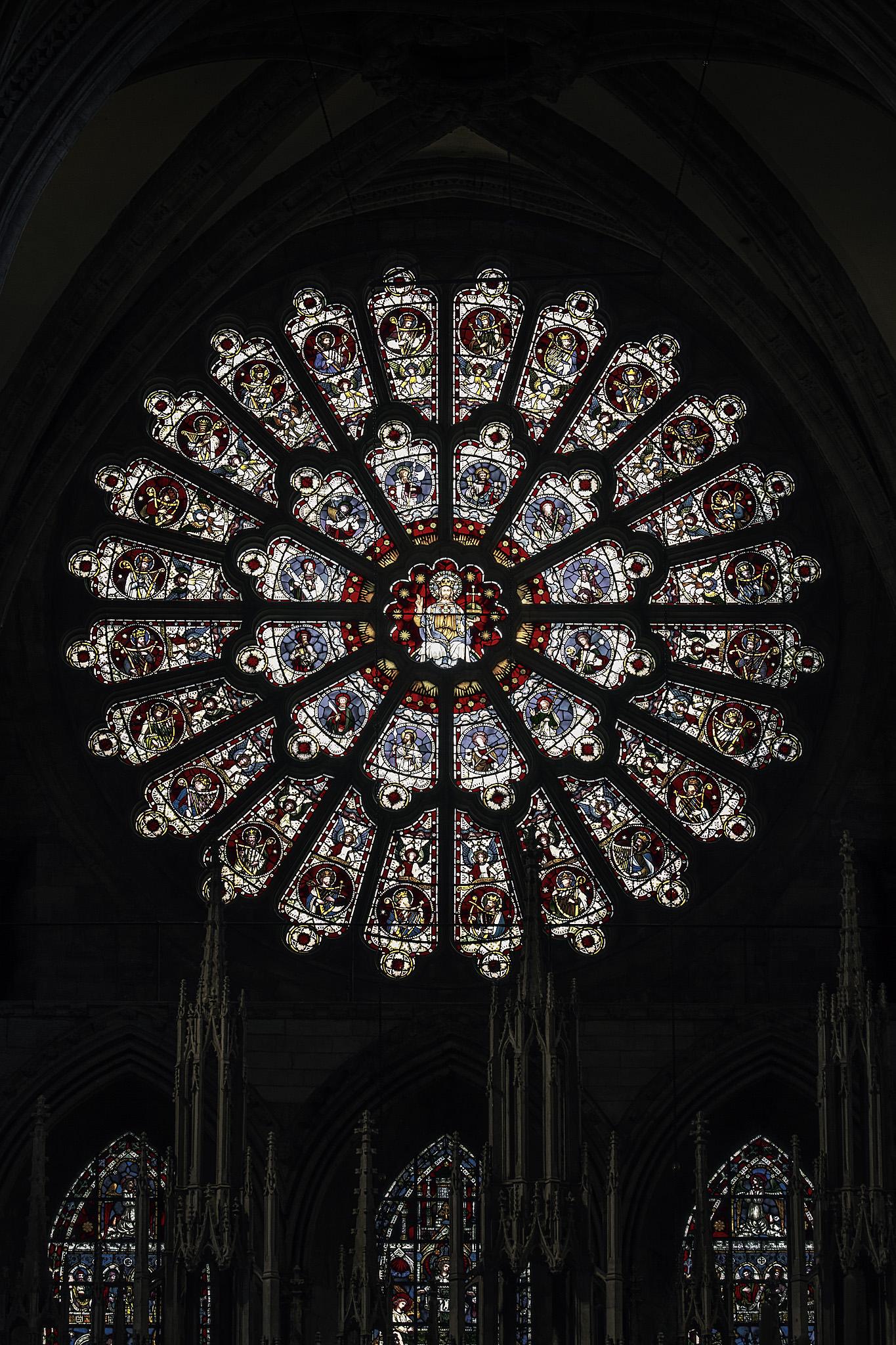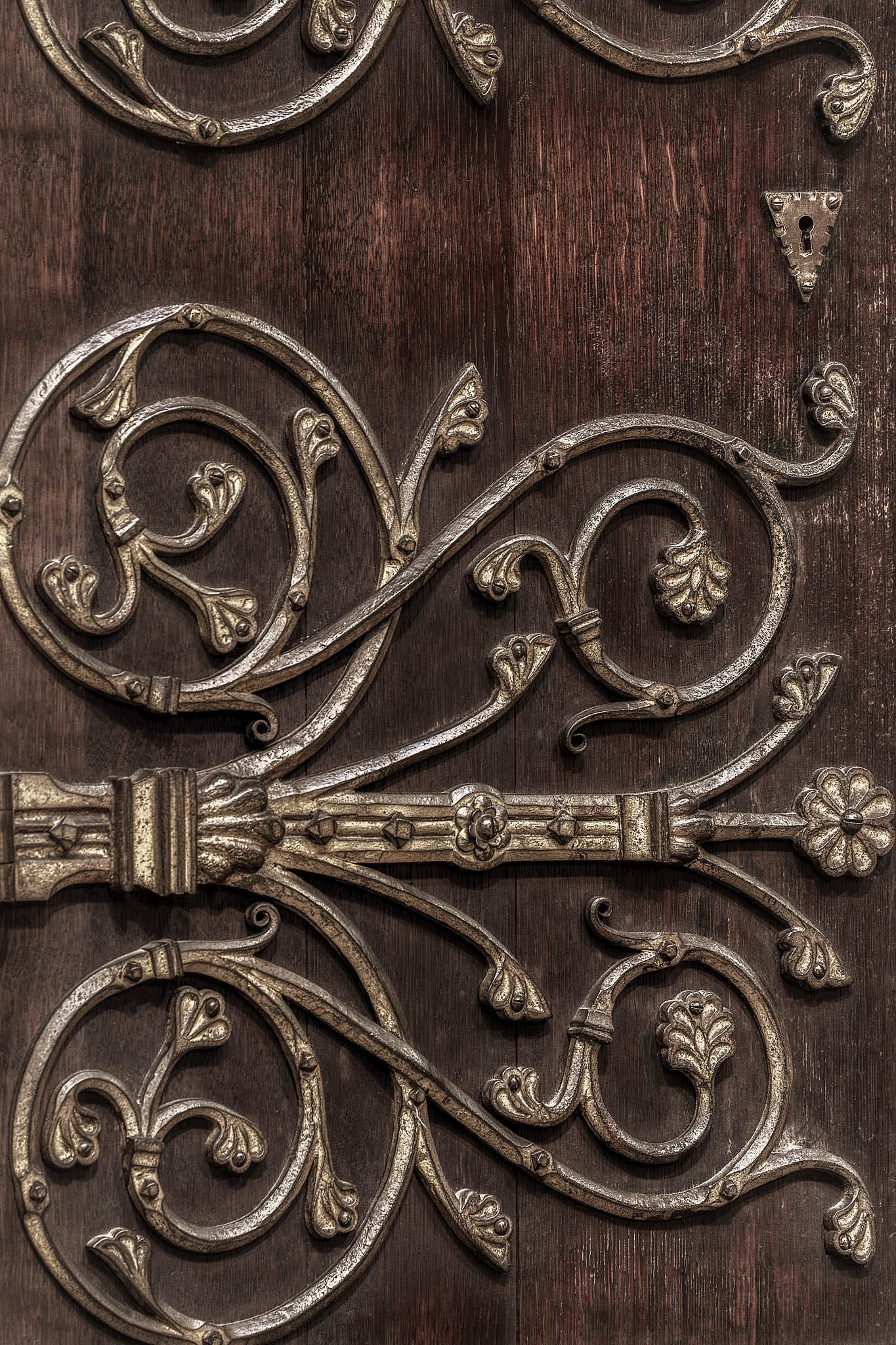Durham Cathedral, North East, England
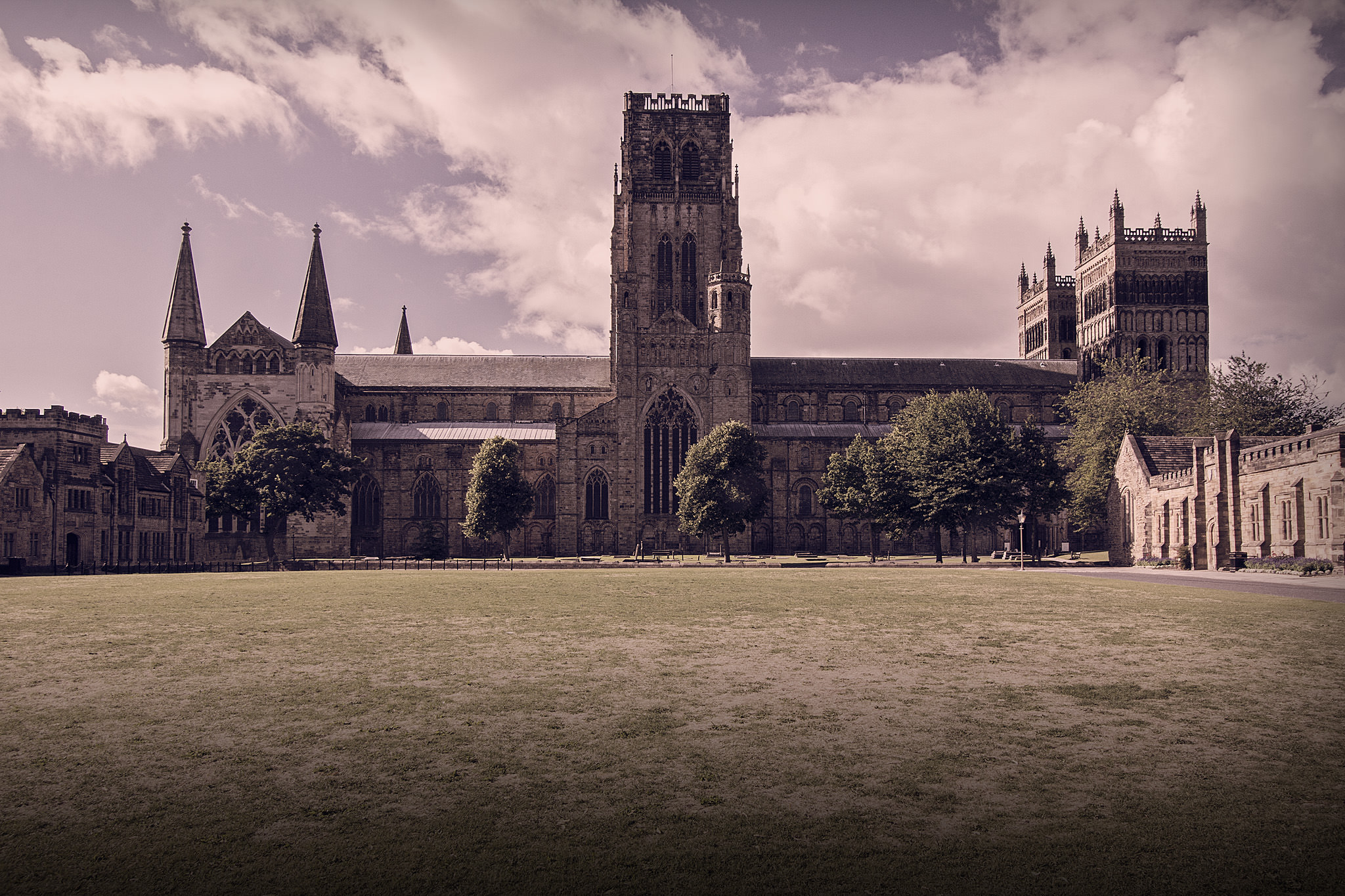

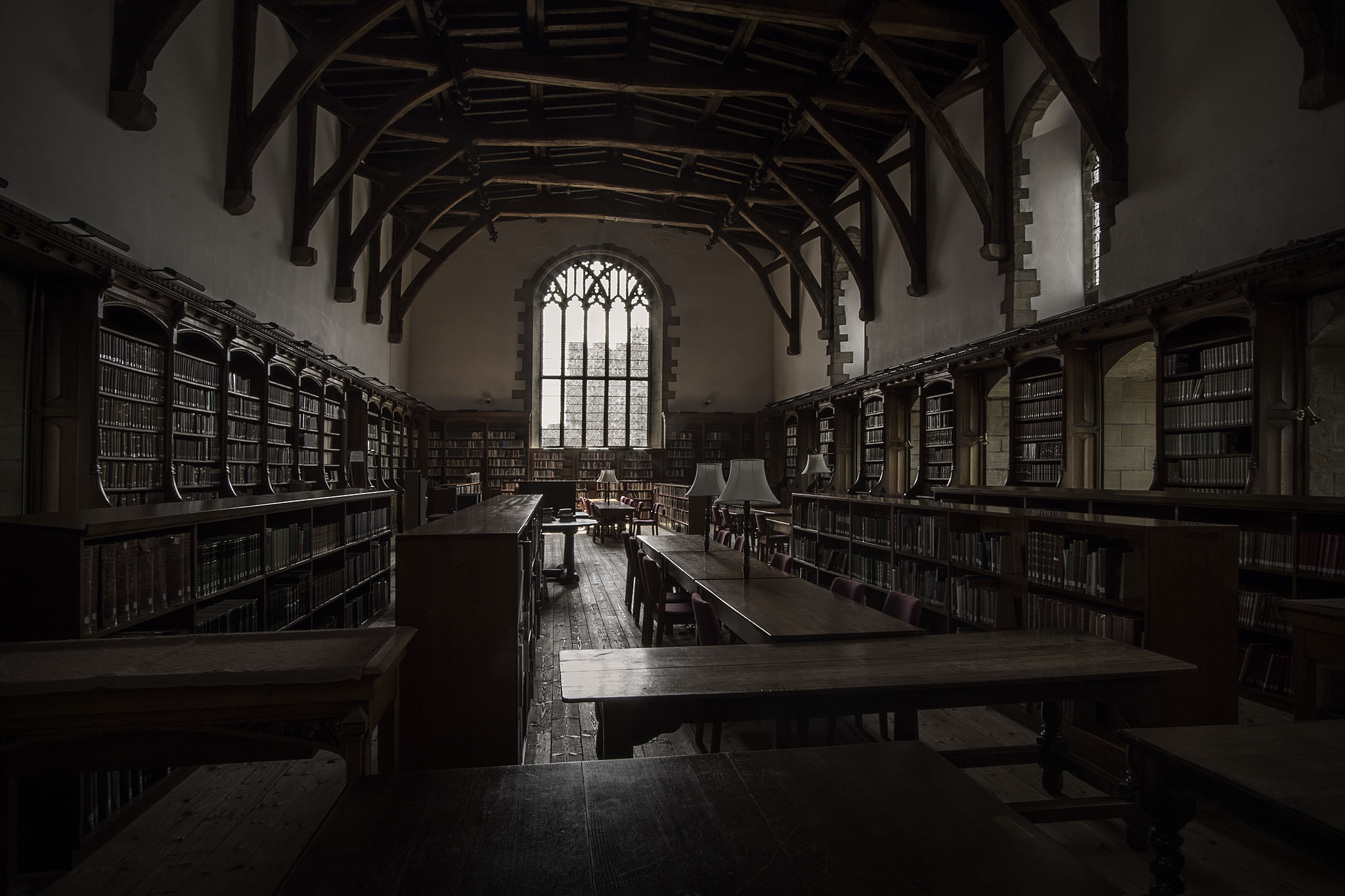

Durham Cathedral is located on a peninsula naturally defended by steep riverbanks. In 1986 it became a designated World Heritage Site.
Legend says that in 990, when the monks of Lindisfarne were carrying around St. Cuthbert’s body and looking for a new resting place for him, they suddenly found themselves unable to move another step. For 3 days they were immobilized, until the image of the saint appeared in a vision to one of the monks, where he was instructed to carry the coffin to Dun Holm or Durham today. The monks, having not heard of such a place, followed a milkmaid towards a nearby hilltop where she was looking for her lost cow, who was last seen in Dun Holm. The monks took this as a sign and there they established the Saint’s final resting place on the cliffs overlooking the River Wear.
Building work on Durham Cathedral began in the late 11th Century. The Cathedral was built as a shrine to St. Cuthbert, who’s body resided in an Anglo Saxon church nearby. The foundation stone of the current Cathedral was laid in 1093.
St. Cuthbert was the Bishop of Lindisfarne in the second half of the 7th Century. Soon after his death, his tomb became a destination for pilgrims. However when the Vikings were raiding this area, the monks left Lindisfarne carrying the body of St. Cuthbert with them. They settled at Durham in 990.
St. Cuthbert’s shrine was one of the greatest centers of pilgrimage in England. Originally decorated with rich green marble and gilded with gold, the entire area around the tomb would have been elaborately decorated and was described as one of the richest monuments.
The nave was completed by 1133 and the arches that were used to form the piers on either side, spanning the width of the nave, are pointed. The pointed arch we now know is much more efficient for load bearing than the rounded arch. Built in the early 12th Century, this is said to be the first time it was used in England and lead to the creation of ribbed vaulting.
It is said, that in 1137 there was a tragedy at the Cathedral when a tightrope walker, who was employed by the Prior of Durham as entertainment, attempted to walk along a rope, which stretched from the central tower to the western tower, the man slipped and fell to his death.
Legend says that in 1183, the Archbishop of York attempted to inspect the treasury of the monks of Durham, who were at that time awaiting the appointment of a new Bishop. They did not feel the Archbishop had the right to do this and the intrusion angered them so much that they clipped the tail of the Archbishops horse and chased him out of the city’s market place.
The Apprentice’s Column is so named because while the Master Mason was away, the apprentice made a mistake in the column and started the pattern wrongly. So far, 178 individual mason’s marks have been found in the Cathedral.
The Neville family commissioned the medieval stone altar screen at the end of the 14th Century. The screen once held 107 statues which were removed at the time of the reformation. They were said to be securely hidden but have never been seen since. The screen itself was built in Caen, France, from local stone and shipped to Newcastle, from where it was brought to Durham in sections and reassembled in the Cathedral.
The Galilee Chapel was begun in the 12th Century and is the Cathedral’s Lady Chapel. It was once the only area of the Benedictine Cathedral which could be entered by women. So strict was this rule, that in 1333 when Queen Philippa, wife of Edward III crossed the line, she was asked to move elsewhere for fear she would upset St. Cuthbert.
Behind the altar in the Galilee Chapel, are medieval wall paintings. The one of the Bishop is thought to represent St. Cuthbert. He carries a crooked staff or crook, as he was thought of as the Shepherd of the Church, wanting to seek out the lost.
The monk’s dormitory survives as a library and still retains its medieval ceiling. Each beam was constructed from a single oak tree. It dates from the 14th Century.
The sanctuary doorknocker is a replica of the 12th Century original. Until 1623 when the right of sanctuary was abolished, one could claim the right of sanctuary for certain crimes. Previously if you reached the Cathedral and grabbed hold of the ring before being apprehended, you would be offered a safe place. You were invited to enter the Cathedral and upon entering, exchanged your clothes for a black robe with a yellow cross of St Cuthbert imprinted on the left shoulder. You would then confess your crime after which you were allowed to remain for 37 days. After that you would be required to leave the country or face trial.
The central tower was built in the 15th Century to replace an earlier tower, which was destroyed by lightning in 1429. It is 200 feet in height.
After the Battle of Dunbar in 1650, 3,000 to 4,000 Scottish prisoners were held in the Cathedral. Most of the woodwork in the church was destroyed at this time by the prisoners, who used it for firewood to keep warm.

